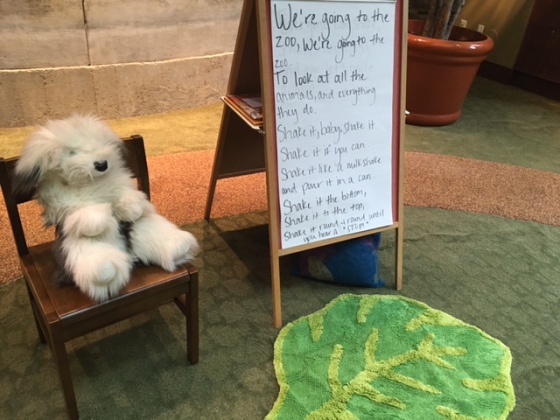
When I moved from a small town library to an urban neighborhood library, I really thought that I was going to have so many families in my storytime. Bigger population means more attendance, right? Oh, how naive.
I learned a lot about the pressures on families in inner-city America during my first months of living in Baltimore. I learned that in cities that once thrived on blue collar industries, there’s been an economic collapse that will take generations to heal. In the mean time, there’s a lot of job scarcity and insecurity for adults trying to raise children and it translates in a big way to attendance in library programs. Mostly, for me, it meant that programs taking place in the morning tended to be sparsely attended in my neighborhood, where unemployment rates were soaring. Most mornings, I would only see one family in the library, and they were almost never intentionally coming for storytime. Probably 90% of families walking into the library in the morning were there so that a parent could work on applying for jobs. Almost immediately, I learned that unemployed parents didn’t feel capable of sitting down to enjoy a storytime when they felt they should be working on applications and searching. While I would always invite these families to participate together, I always saw parents send their child to my storytime carpet alone. They recognized that their child needed the interaction and they were grateful that I could help in providing that.
Some library folks would probably find this problematic. I’ve heard that some staff will never do storytime if a parent is not actively involved or if there’s only one child. For me, it was either provide a service this way, or don’t provide the service. I spent a lot of time thinking about it and I concluded that I didn’t have a lot of options for trying to reach more kids. The staffing structure I was working with didn’t leave a lot of room for me to do outreach, nor were there parks or public spaces where I could easily and safely go do storytime alone. I saw (and still see) a lot of value in giving a child a positive one-on-one interaction with a librarian and a personalized experience with a book.
Here are some tips on how I ran storytimes for one child.
Keep it short and simple. For me, I pulled a few books every week and prepared a full storytime, but when I only had one child, I would narrow down my plans to start with one book, a dance or recorded song, and some activity with a prop. If I got those three things in and the child still seemed engaged and interested, I’d add another book and maybe a flannel game.
Let most activities be a choice between two things. I would usually start out by introducing myself, learning the child’s name, and saying something like, “I’m so happy you’re here! I have some songs and games and some really, really good books. Since you are the only kid here, you get all of my attention right now. I don’t get to do this all the time and I will have to go back to my desk to work soon, but right now, I get to play with you. What do you want to do first? We could dance to a song about pretending to be a dinosaur, or we could pick a book together.”
Vocalize your time limits more than usual. When there’s only one child, I’ve noticed that it’s harder for them to understand when storytime has to end. Things go a little better if you make it clear from the start that you only get to do a few things together. After a couple activities, maybe say, “I can only do one/two more things now. Let’s make it extra fun.”
Be flexible. Admittedly, this is a skill that takes time to develop for a lot of people. When you only have one child, especially if you do storytime on the floor, your little listener is probably going to wander a little. They might point to things mid -story and ask about them. They might close the book for you and pick another. They might ask if they can go play on the computer. Try to appear interested, but rope in their attention to whatever you want for them. “Right? The clock is really pretty and it tells me when it’s time to go home. Do you think we should read my favorite part of the book next, or should we dance now?”
Your goal is to give them a positive experience they can remember. Switching up your expectations in storytime and adapting to be child-led is hard, but that work is just as important as a traditional storytime. In an even more realistic way, it models for parents how they can be a teacher for their child and it gives kids a rich interaction during a time when they may have been alone with toys or a computer.
So shout-out to all library folks who are doing storytimes for one. You are very important.
**An unsolicited foot note: I’m using a lot of past tense here because I recently moved to another branch and these aren’t my current storytime circumstances. It was still an experience I wanted to talk about and share.

Thanks for sharing that experience, Brytani! I had a “storytime for one” just last week! I’m grateful for the reminder that those times are just as important as group storytimes. 🙂